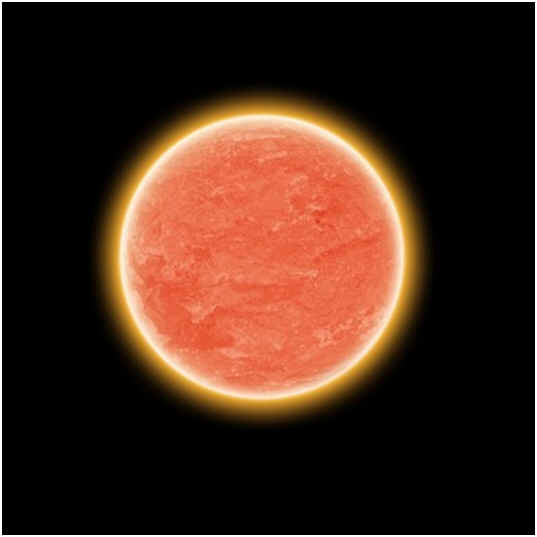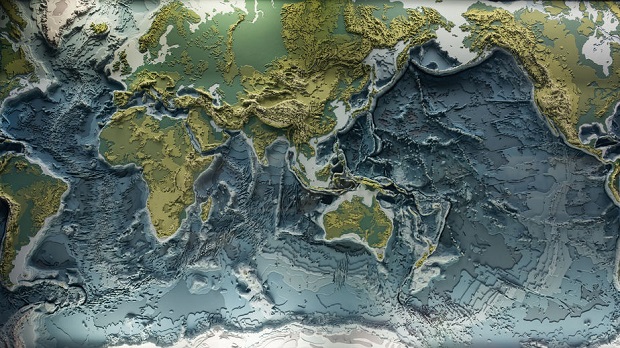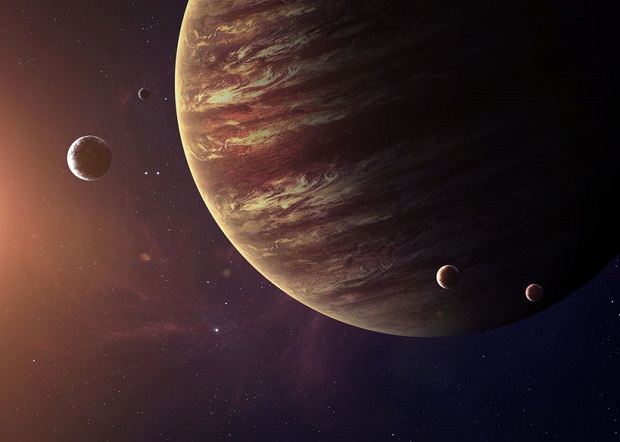
Does Jupiter Have Any Moons?
Jupiter has eighty moons.
Jupiter has many moons and satellites, most of which are less than ten kilometers in size. Of the eighty known moons of Jupiter, sixty are smaller than 6.2 miles in diameter. ((“Jupiter’s Moons: Facts About the Largest Jovian Moons” Space.com))
The number of moons around Jupiter is constantly changing, with the latest moon discovered in 2021 (as of 2023). Interestingly, 57 moons are named, while 23 await official names. ((“Jupiter’s Moons: Names, Number, and Exploration” NASA))
Galilean Moons of Jupiter

Photo courtesy of NASA
Four of the largest moons in the entire Solar System are floating around Jupiter. Galileo Galilei discovered these four moons in the seventeenth century, which are named the Galilean Moons. These moons are Io, Europa, Callisto, and the largest moon of all, Ganymede. ((“Jupiter Moons.” NASA))
Ganymede
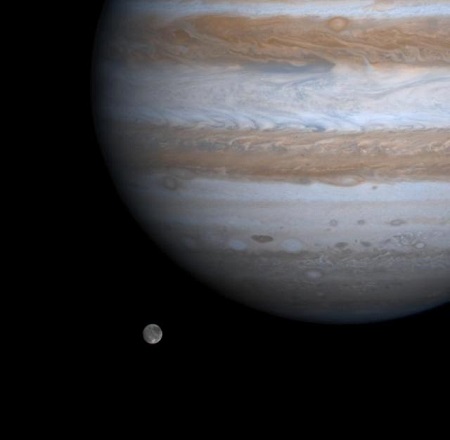
Photo courtesy of NASA
Of all the moon’s orbiting planets in the solar system, Ganymede is the largest, almost half as big as Earth and larger than the planet Mercury. It orbits the planet Jupiter roughly every seven days.
Various space probes have studied Ganymede and discovered that it has a thin oxygen atmosphere and presumably an underground ocean two hundred kilometers beneath the ice surface. ((“Jupiter’s Moon Ganymede” Universe Today))
The Nature of the Moons that Orbit Jupiter
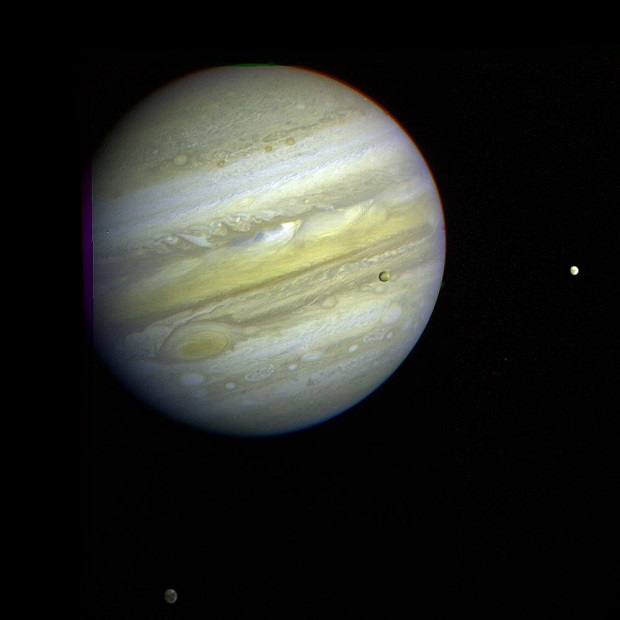
Image Credit: CREDIT NASA/JPL
Eight of the moons of Jupiter are considered to have regular, that is, circular, orbits. The rest of the moons have irregular orbits and are generally much further away from the planet itself. These moons have eccentric orbital patterns and were likely satellites that were captured from solar orbits. ((“The Moons of Jupiter” Phys.org))




